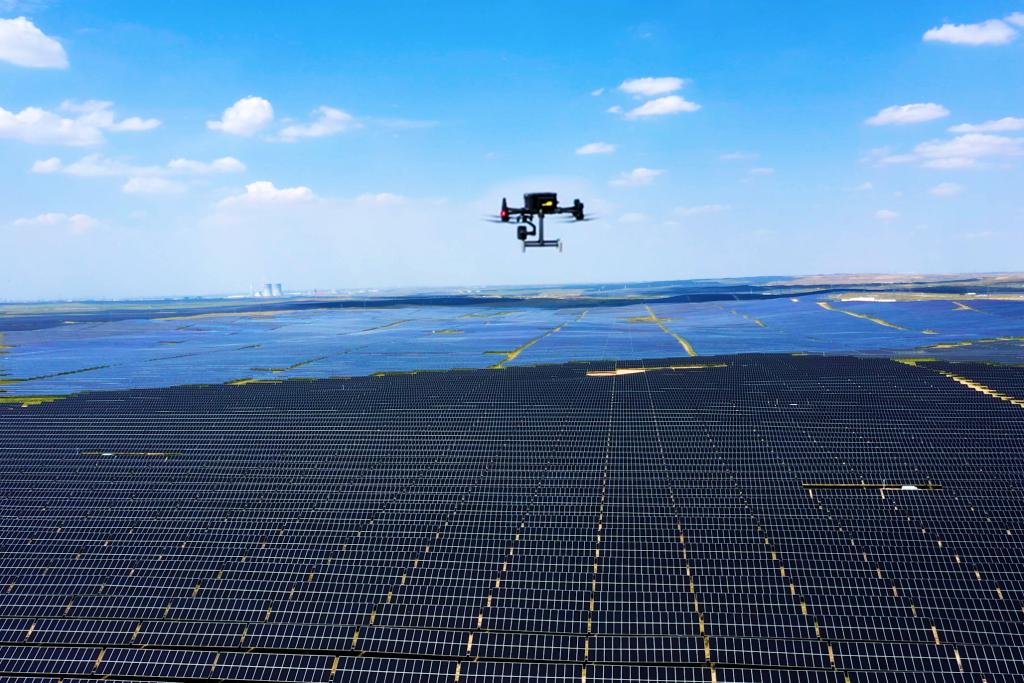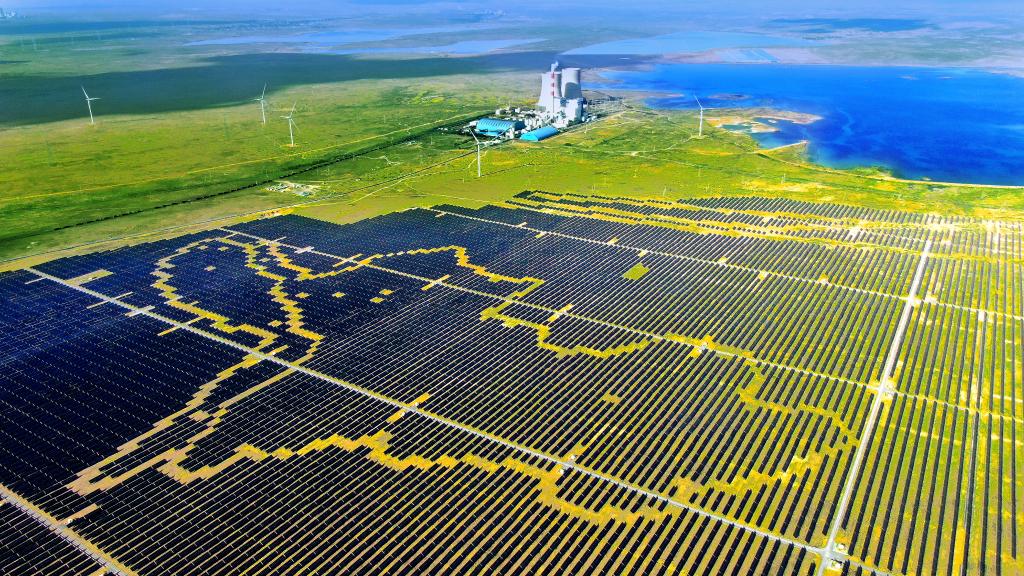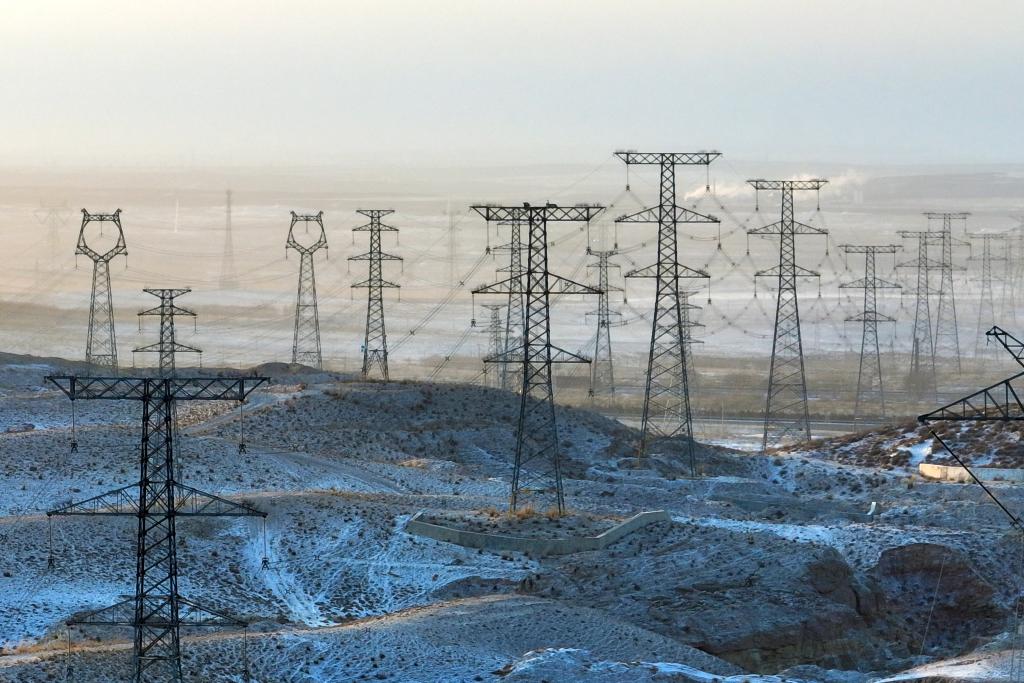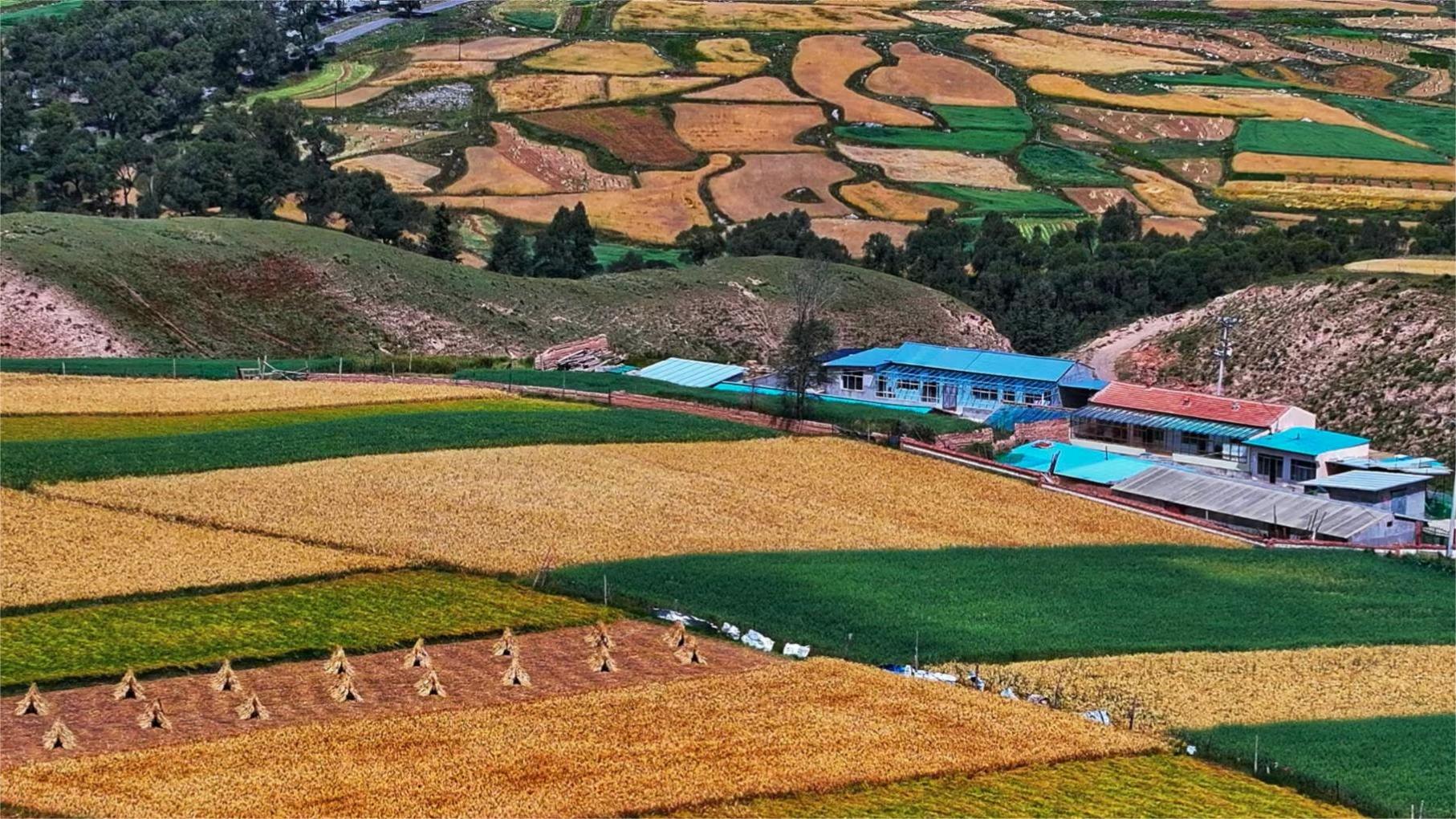Coal-to-green transition redefining China's west-to-east power transmission
* China's west-to-east power transmission system, which channels the surplus electricity in the west to the power-hungry east, is switching to clean energy amid the country's low-carbon drive.
* Ningxia, a region in northwest China, epitomizes this green transition with its installed capacity for new energy having overtaken that of coal power.
* Energy storage facilities and green certificates are contributing to the success of the clean-energy industry in western China.
YINCHUAN, Sept. 14 (Xinhua) -- In northwest China's Gobi Desert, two neighboring power plants testify to an ongoing clean energy transition in the country's west-to-east power transmission system.
Yuanyanghu, one of China's largest thermal power stations, stands out with its 200-meter-high cooling towers. A railway goes directly into the plant, supplying more than 20,000 tonnes of coal a day. Its vast expanse of coal storage looks like undulating hills.
Last year, the plant in Ningxia Hui Autonomous Region generated 16.8 billion kilowatt-hours (kWh), which traveled more than 1,000 km to power up manufacturing plants in the eastern provinces of Shandong and Zhejiang.
Now, about 10 minutes' drive from the thermal behemoth, a new photovoltaic power station has emerged to herald the low-carbon and high-tech future of this power relay.
The Ningdong photovoltaic base is maintained by fewer than 100 people and a fleet of automatic-inspection drones, which helped reduce the facility's environmental impact. Built on a coal-mining subsidence area, it is also equipped with a smart system to monitor subsidence, the legacy of underground mining, so as to timely draft maintenance plans.
The plant exports 3.6 billion kWh of solar power every year through west-to-east power transmission. Though the output is not on par with its coal-fired neighbor, similar solar stations are popping up in the area in greater numbers.
"It sets an example for revitalizing coal mining subsidence area for new-energy production," said Shu Maolong, an engineer with the Ningxia branch of CHN Energy Investment Group (CHN Energy), the constructor of the base.

This aerial drone photo taken on May 12, 2024 shows a drone conducting intelligent inspection at the Ningdong photovoltaic base in northwest China's Ningxia Hui Autonomous Region. (Xinhua/Xu Jinyu)
Over a decade since it joined the national project of channeling the surplus electricity in the west to the power-hungry east, the coal-rich Ningxia is switching to clean energy amid the country's drive to peak carbon dioxide emissions by 2030.
Boasting the ninth largest coal reserve in the nation, Ningxia has supplied 650 billion kWh of thermal power to other parts of the country since 2011 through two cable networks. Its power exports helped satisfy east China's appetite for affordable electricity, while generating more than 60,000 jobs and revenue of 160 billion yuan (about 22.5 billion U.S. dollars) locally.
In recent years, Ningxia has leveraged its abundant wind and solar resources to build a clean-energy industry. By June, the installed new-energy capacity had reached 37 million kW to account for over half of the regional total.
The rise of new energy has redefined the power transmission to the east. In the first half of this year, Ningxia exported 43 billion kWh of power, including nearly 10.6 billion kWh of new energy. Representing a year-on-year increase of 120 percent, the export of new energy is equivalent to reducing carbon dioxide emissions by 8.91 million tonnes, according to Ningxia's electricity transaction center.
Ningxia is now building its third cable network to export solar and wind energy to central Hunan Province. Its completion, scheduled for next year, is expected to further raise the region's installed new-energy capacity to 60 million kW.

This undated aerial drone photo shows a view of a photovoltaic base, part of a west-to-east power transmission system, on a coal-mining subsidence area in northwest China's Ningxia Hui Autonomous Region. (Xinhua)
POWERING UP THE GREEN TRANSITION
According to this year's government work report, in 2023, China's installed renewable energy capacity surpassed its thermal power capacity for the first time in history, and China accounted for over half of newly installed renewable energy capacity worldwide.
Like Ningxia, the clean-energy industry is taking off in China's less-developed west, where the total installed capacity of new energy has surpassed 400 million kW and is continuing to rise.
In Qinghai, a vast plateau province to the west of Ningxia, the installed capacity of renewable energy had reached about 51.1 million kW by the end of 2023, accounting for 93 percent of the province's total installed capacity.
This successful switch to green energy is significant for western China, especially considering the doubts once clouding the development of wind and solar power, which relies heavily on weather conditions and can cause damaging fluctuations when connecting to the grid on a massive scale.
Both Qinghai and Ningxia are building energy storage facilities to solve this problem. In Ningxia, the grid's smooth operation is supported by 37 energy storage plants, which work like a power bank, storing excess electricity during production peaks and delivering it during off-peak hours.
At the Muhe No.1 energy storage plant in city of Zhongwei, container-shaped battery packs can absorb 400,000 kWh in two hours.
"Since entering operation a year ago, our plant has stored 190 million kWh of electricity, which would have been wasted otherwise," said Jiang Fei, head of the plant.

This aerial drone photo taken on Jan. 21, 2024 shows part of the power transmission lines of the west-to-east power transmission system in northwest China's Ningxia Hui Autonomous Region. (Xinhua/Xu Jinyu)
The brisk trade of green certificates is also facilitating the region's green transition. Representing electricity generated from renewable energy, the government-issued certificates can be traded to heavy emitters that are aiming to reduce their carbon footprint.
This means extra profits for new-energy producers in the western provinces. The Ningdong photovoltaic base, for instance, produces over 2 million green certificates a year, which can be traded for 20 million yuan, according to Gao Xu with the CHN Energy's Ningxia branch.
"The green certificate sector is still in its nascent stage and has unstable prices, but as China pushes ahead with carbon reduction, the certificates may bring us more surprises in the future," Gao said.
Photos
Related Stories
- China's big role in global green transition
- National Ecology Day special: Saihanba's green tales for the world
- Progress in turning China green
- China's Fujian turns waste plastic bottles into wealth, contributes to green development
- Nation sets example for green transition
- China emerges as crucial partner in Africa's green energy transition
- President champions green growth
- CRRC releases world's first report on carbon footprint of pure electric locomotives
- Bank of Communications ups loan support for green transformation
- World Environment Day: Turning China green
Copyright © 2024 People's Daily Online. All Rights Reserved.









